Intel Core i3-2120 3.3GHz Sandy Bridge Processor Review
Intel Core i3-2120 Overclocking
Overclocking greatly varies due to what hardware is being used and who is doing the overclocking. Always remember that no two pieces of hardware will perform the same, so our results will differ from what you might be able to get. The Intel retail boxed CPU cooler was used for overclocking, so we’d expect this overclock to be easily reached by anyone!
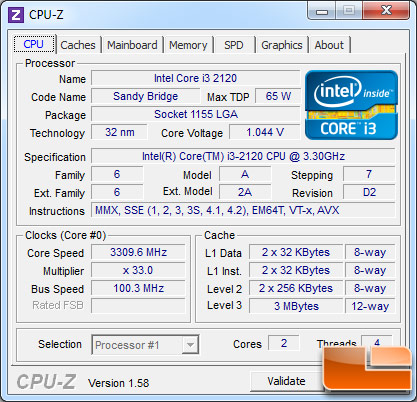
Here is a CPU-Z v1.58 screen shot of the Intel Core i3-2120 to see what we are going to be overclocking. The processor has a base clock of 100MHz with a multiplier of 33. This is not a ‘K’ series processor, which means it has a locked multiplier, so you can lower the multiplier in the BIOS, but you can not increase it. The Core i3-2120 also doesn’t have Turbo Boost, so the only thing that we can do to really overclock the CPU is to increase the bus frequency. Intel ‘Sandy Bridge’ processors don’t like to have the bus increased much, so overclocking on this processors really isn’t that fun.
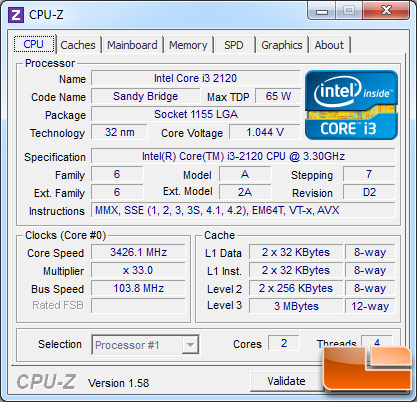
With everything left to default in the BIOS and by just raising the back clock frequency we were able to reach 104MHz base clock in a matter of seconds. While a 4MHz base clock doesn’t sound like much it increased the overall frequency of the processor up to 3426MHz, which is an increase of 117MHz and for a budget processor we can’t really complain about a free performance boost.
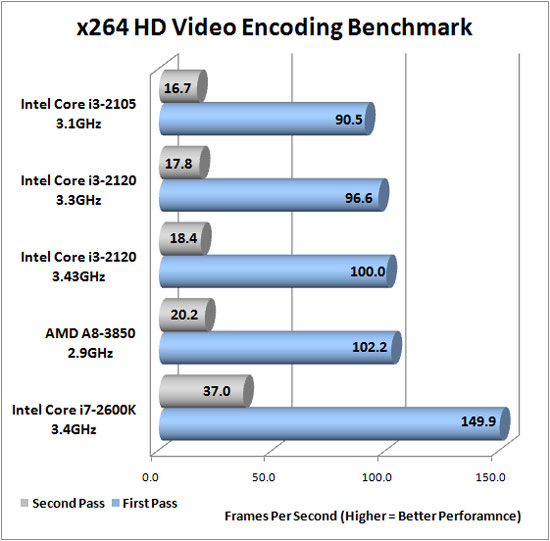
The 3.8MHz increase on the base clock (BCLK) was only only a minor improvement, but it did help boost the overall clock frequency by 3.8% since the default BCLK is 100MHz. In benchmarks like x264 HD we saw a 3.4% improvement in x86 CPU performance!
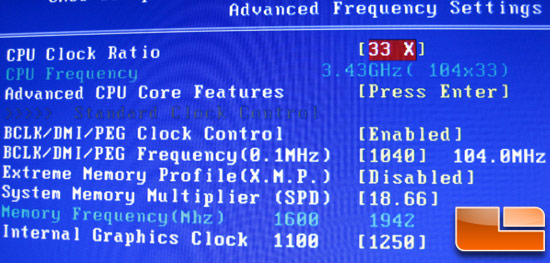
One of the other things you can overclock on the Intel Core i3-2120 is actually the Intel HD Graphics 2000 GPU! The default setting for this GPU is a base clock of 850MHz, but it has a maximum dynamic frequency of 1100MHz. We were able to push that clock speed up to 1250MHz in the BIOS of the Gigabyte GA-Z68X-UDH3-B3 motherboard that we are using. This is an increase of 150MHz and really helped out in games and any benchmark that uses the GPU!
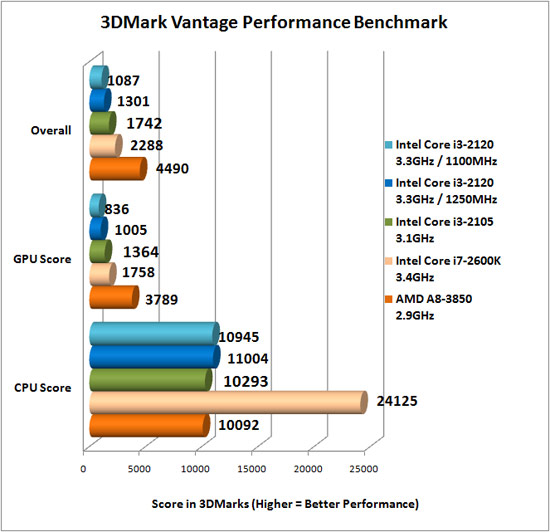
Overclocking the GPU up to 1250MHz from 1100MHz helped boost our 3DMark score from 1087 3DMarks to 1301 3DMarks! This is a performance improvement of nearly 20%, which is impressive and as you can see overclocking the GPU on this processor will give you substantial performance gains in the graphics department. If you happen to have an Intel Sandy Bridge processor you might want to try adjusting one or both of these settings to dial it into your specific needs. Overclocking does increase power consumption, so only overclock what you honestly need!

Comments are closed.